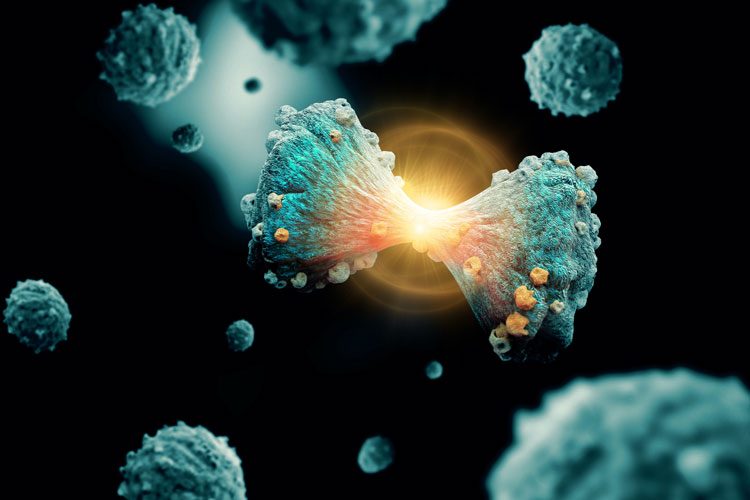Scientists find leukaemia’s Achilles heel in vitamin B6
Posted: 15 January 2020 | Mandy Parrett (Drug Target Review) | No comments yet
A possible new avenue for treatment of Acute Myeloid Leukaemia (AML) has opened up after US scientists pinpoint how the cancer spreads using excessive amounts of vitamin B6.

Scientists have discovered that Acute Myeloid Leukaemia (AML) grows by using the B6 vitamin to accelerate cell division. The research team from Cold Spring Harbor Laboratory (CSHL) and Memorial Sloan Kettering Cancer Center (MSK) suggest they could halt the growth of this cancer by limiting its ability to manipulate the enzyme that pushes B6 to make proteins essential for cell division. This approach has the benefit of attacking cancer without harming those healthy cells that need the B6 vitamin to survive.
Currently, only a third of AML patients survive five years after diagnosis, because the cells involved in this aggressive form of blood cancer can divide and spread at a faster rate than most treatments’ ability to kill them.
In an attempt to understand the mechanisms behind the rampant spread of the disease, CSHL Fellow Lingbo Zhang investigated the genes of AML white blood cells.
“We found more than 230 genes that are very active in leukaemic cells and then we tested them, one by one,” he explained.
Using CRISPR gene-editing technology, Zhang‘s lab were able to essentially shut down the activity of each of these 230 genes and assess the resulting impact on the cancer cells. The team of scientists identified a pattern: the gene that produces PDXK, the enzyme that helps cells use vitamin B6, proved most important for the growth of the cancer.
Scott Lowe, a former CSHL fellow and currently chair of the Cancer Biology and Genetics programme at MSK, said “while the action of certain vitamins has previously been linked to cancer, the specific links between vitamin B6 identified here were unexpected.”
The B6 vitamin is crucial to cell metabolism, producing energy and other resources important for cell growth. In a healthy cell, the PDXK enzyme manages the activity of B6, ensuring that the vitamin does the job when needed. Due to the fact that normal cells do not divide all the time, the PDXK enzyme does not continually push the B6 vitamin to be active.
However, the situation differs in cancer cells, which divide more frequently than normal cells. In AML cells, Zhang observed that the PDXK enzyme was always pushing B6 activity, indicating that, “leukaemic cells are addicted to vitamin B6,” he said. “You can call it a vulnerability of the cancer.”
Zhang cautions that this does not mean that cancer patients would necessarily benefit from a reduced intake of vitamin B6, as it is necessary for the survival of healthy cells. Instead, the research shows that cancer cells utilise the PDXK enzyme to increase vitamin B6 activity, which then fuels AML growth.
Zhang and his colleagues say the next step is to develop a drug that specifically blocks leukaemia cells’ ability to activate the PDXK enzyme. By manipulating the way the enzyme manages the activity of B6, a drug could slow or even stop the growth of cancerous cells without the profound side effects that would result from completely eliminating B6 from healthy cells. With the help of medicinal chemists, the team is now exploring this route.
Related topics
Analysis, Disease Research, Enzymes, Genetic Analysis, Genome Editing, Research & Development, Targets
Related conditions
acute myeloid leukaemia (AML)
Related organisations
Cold Spring Harbor Laboratory (CSHL), Memorial Sloan Kettering Cancer Center (MSK)
Related people
Lingbo Zhang, Scott Lowe







